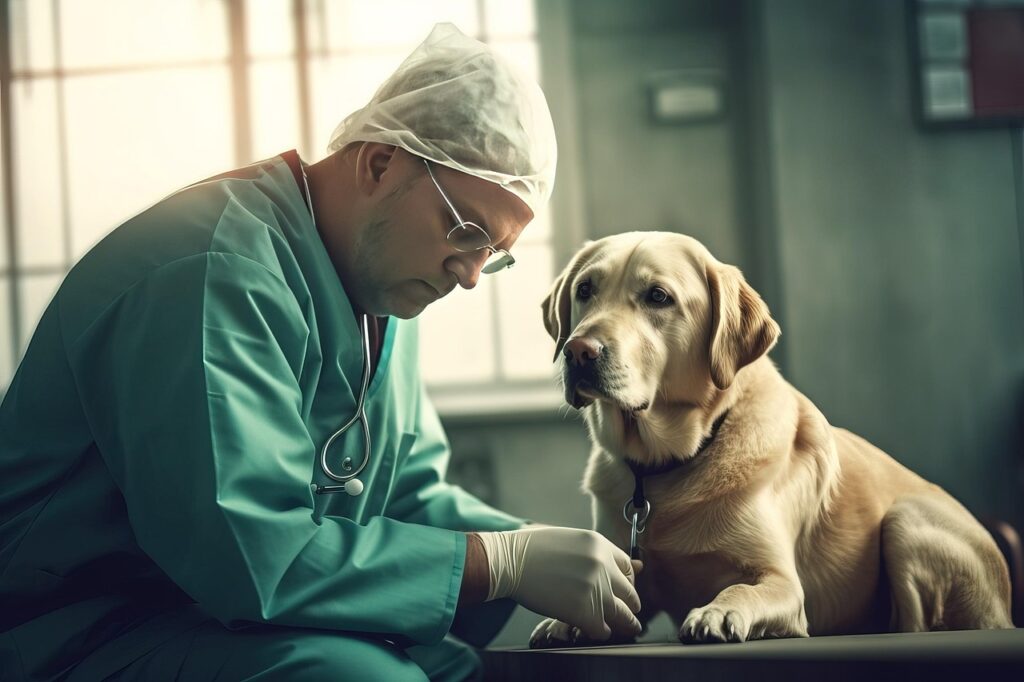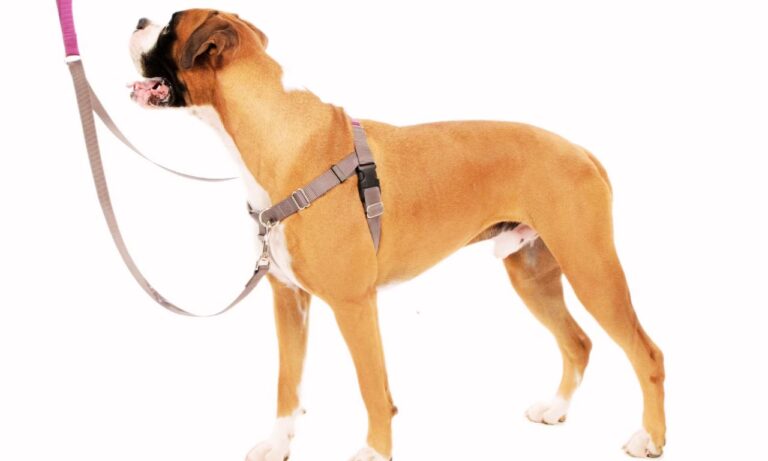| Summary: If you accidentally put cat flea medicine on your dog, wash the area immediately with mild soap and water. Monitor for reactions like itching or lethargy. Most cat flea treatments are milder, but always consult your vet to ensure safety. Use species-specific flea treatments to avoid potential health risks. |
Last summer, I had one of those heart-stopping moments that every pet owner dreads: Accidentally Put Cat Flea Medicine on Dog. In the chaos of my busy morning routine, I accidentally applied a dose of cat flea medicine to my dog, Max. As soon as I realized what I had done, I felt a surge of panic. What if this was harmful? What could go wrong? Cat flea medicine may not be strong enough for dogs and could leave them unprotected. GPS dog collars help monitor flea-infested areas your dog frequents.
I’m sharing my personal experience with this accident, what I learned about the differences between cat and dog flea medications, and the steps I took to ensure Max’s health and safety. My hope is that this story helps you avoid a similar mistake—and if it happens, you know exactly what to do.
For insights on whether Pomeranians should wear a collar, including considerations for safety and alternatives, check out this informative article.
Blog Highlights
ToggleAccidentally Put Cat Flea Medicine on Dog: Morning of Chaos
It all started on a typical hectic day. I was juggling my work-from-home schedule, getting breakfast ready, and feeding my two pets—a playful cat named Luna and my energetic dog, Max. In my rush, I grabbed what I thought was the usual flea treatment for Luna. Unbeknownst to me, I had mixed up the bottles, and I ended up applying the cat flea medicine to Max instead. Some cat flea treatments lack key ingredients to fully eliminate fleas on dogs. Pet tech products like flea-detecting LED combs can help ensure effectiveness.

I remember the moment vividly. I had just finished massaging the spot-on treatment into Max’s neck when I paused, noticing the label on the bottle in my hand. It wasn’t meant for dogs at all! My heart sank. I immediately wondered, “Is this dangerous? What should I do?” The minutes that followed were filled with worry as I watched Max for any signs of distress.
Understanding the Difference: Cat vs. Dog Flea Medications
Before diving into what I did next, I spent some time researching the differences between flea treatments for cats and dogs. I learned that while both are designed to kill fleas, they are formulated differently based on the animal’s physiology. While most cat flea treatments won’t harm dogs, they may not provide adequate flea control. Electronic dog collars can deter excessive scratching from fleas.

Key Differences I Discovered:
- Active Ingredients:
- Cat Flea Medications: Often contain ingredients and concentrations that are safe for cats. Cats have a unique metabolism and can handle a different dosage of insecticides. Some ingredients used in cat treatments (like certain pyrethroids) can be toxic to dogs.
- Dog Flea Medications: Are tailored to a dog’s skin, body mass, and metabolism. They use similar active ingredients but in concentrations that are safe for canines.
- Absorption Rates:
- Dogs have thicker skin and a different rate of absorption than cats. This means that a dose that is perfectly safe for a cat might be too strong for a dog if used in the same quantity.
- Side Effects and Toxicity:
- While both products aim to kill fleas, a product designed for cats might cause adverse reactions in dogs, such as skin irritation, digestive upset, or even neurological symptoms in severe cases.
Knowing these differences helped me understand the potential risks of what I had done. I realized that my mistake might expose Max to chemicals at a concentration that wasn’t intended for him.
For a comprehensive guide on what kind of harness is best for a Pomeranian, including comfort and safety tips, check out this article.
Immediate Actions: What I Did When I Realized My Mistake
When I discovered the error, I knew I needed to act fast. Here’s what I did:
1. Stay Calm and Assess the Situation
My first step was to take a deep breath and assess Max’s condition. I observed him carefully for any signs of distress, such as:
- Unusual lethargy or restlessness
- Vomiting or diarrhea
- Excessive drooling
- Signs of skin irritation around the application area
Fortunately, at that moment, Max seemed alert and his behavior was normal. However, I knew that symptoms could take time to appear. If you accidentally used cat flea medicine on your dog, consult a vet to ensure proper flea protection. Dog training equipment can help maintain a structured flea prevention routine.
2. Remove Any Remaining Product
I quickly checked to ensure that no additional cat flea medicine was accessible to Max. I removed the bottle from his reach and set it aside. Preventing further exposure was crucial to stopping any additional adverse effects.
3. Contacting My Veterinarian
Not wanting to take any chances, I called my veterinarian immediately. I explained the situation in detail, including the specific product I had used, the amount applied, and Max’s current condition. The vet reassured me that while the situation was concerning, Max was showing no immediate severe symptoms. They advised me to monitor him closely for the next 24 to 48 hours and to bring him in for an evaluation if any unusual behavior or symptoms developed.

4. Monitoring and Recording Symptoms
I decided to keep a detailed log of Max’s behavior. I recorded:
- His energy levels at regular intervals
- Any signs of vomiting, diarrhea, or unusual drooling
- Changes in his appetite or behavior
This log was useful for both my own peace of mind and for the vet, in case an emergency visit became necessary.
Discover if the American Eskimo is a guard dog and learn about its suitability for protecting your home.
The Waiting Game: 24 to 48 Hours of Vigilance
The next two days felt like an eternity. I stayed hyper-vigilant, checking on Max every few hours. I made sure he had plenty of fresh water and stuck to his regular routine as much as possible. I even adjusted his meals slightly to ensure he wasn’t eating too much or too little, as stress can sometimes affect a pet’s appetite.
During this period, I also sought more information online and from trusted pet care forums. I discovered that while many pet owners had experienced similar mix-ups, most reported that their dogs remained fine after a single accidental dose. However, I also read that any deviation from the prescribed usage can lead to complications, which reinforced the importance of following professional advice.
The Vet Visit: Getting a Professional Opinion
After about 36 hours of close monitoring, I felt it was best to take Max in for a check-up. Even though he still appeared mostly normal, I wanted to be absolutely sure there was no lingering effect from the accidental dose.

At the veterinary clinic, the vet performed a thorough examination. They checked Max’s skin for irritation, listened to his heart and lungs, and even conducted a quick blood test to look for any abnormal markers that might indicate a reaction to the flea medication.
What the Vet Found
- No Immediate Signs of Toxicity: The vet was relieved to note that Max showed no obvious signs of toxicity. His blood work was within normal limits, and his skin appeared healthy without any irritation or redness.
- Advice for Continued Monitoring: The vet recommended that I continue to monitor Max at home for another couple of days, particularly watching for any delayed symptoms like lethargy, loss of appetite, or vomiting.
- Reassurance: Overall, the vet reassured me that a one-time accidental application of cat flea medicine on a dog is unlikely to cause long-term harm in an otherwise healthy dog. However, they stressed the importance of keeping such products clearly separated in the future.
Learn about the size collar for an American Eskimo to ensure a perfect fit and comfort for your dog.
Reflecting on the Experience: Lessons Learned
This incident was a wake-up call in many ways. I realized how easily a simple mistake could potentially have serious consequences if not addressed promptly. Here are some key takeaways from my experience:
1. Always Double-Check Products
In our busy lives, it’s all too easy to mix up products, especially when you have multiple pets with different dietary and treatment needs. Now, I always take a moment to double-check the label before using any product on my pets. This small step can prevent accidental mix-ups that might put your pet’s health at risk.
2. Store Products Separately
I learned the importance of storing pet medications and treatments in clearly designated areas. I now keep all cat-specific products in one cabinet and dog-specific products in another. This organizational strategy has significantly reduced the risk of confusion.
3. Have a Plan for Emergencies
Before this incident, I didn’t have an emergency plan for dealing with accidental exposure to the wrong medication. Now, I keep my vet’s contact information readily available, and I have a small log to record any unusual behavior in case of future incidents. Being prepared can make a huge difference in managing emergencies effectively.
4. Don’t Panic—But Act Promptly
While it’s natural to panic in these situations, staying calm allowed me to take the right steps quickly. Panicking could have led to overreacting or making impulsive decisions that might have worsened the situation. Instead, I followed a logical process: assess, act, and monitor.
5. Communication Is Key
Talking to my vet was the best decision I made. Their reassurance and clear instructions helped me manage the situation without unnecessary stress. It’s a reminder that, as a pet owner, you’re not alone—veterinarians and pet care professionals are there to guide you through these challenging moments.
Discover why Afghan Hound collars are wide by exploring the unique characteristics of this breed and how wide collars enhance their comfort and style.
Preventing Future Mistakes
After the incident, I made several changes to my daily routine and home setup to ensure that nothing like this would happen again:
- Labeling: I’ve labeled all pet care products clearly and even added a note about which pet they’re intended for. This simple measure has been incredibly effective.
- Separate Storage Areas: I’ve designated specific storage areas for cat and dog products. Not only does this help prevent mix-ups, but it also gives me peace of mind knowing that each pet’s needs are being met without any accidental cross-contamination.
- Regular Training and Updates: I’ve also taken the time to review pet care guidelines and attend webinars on safe pet care practices. Staying informed helps me ensure that I’m using products correctly and keeping up with best practices.
- Family Awareness: I’ve educated everyone in my household about the importance of using the right products for the right pet. This includes leaving clear instructions for any caregivers or family members who might be responsible for pet care while I’m busy.
What to Do If It Happens to You
If you ever find yourself in a situation similar to mine, here are the steps you should take immediately:

- Assess Your Pet: Quickly evaluate your pet’s condition. Look for any signs of distress such as vomiting, lethargy, changes in behavior, or skin irritation.
- Remove the Product: Ensure that no more of the incorrect medication is accessible. Remove the bottle from your pet’s reach and secure it.
- Contact Your Veterinarian: Call your vet as soon as possible. Provide them with all the details: what product was used, how much was applied, and what symptoms (if any) you’ve noticed. Follow their advice carefully.
- Monitor Closely: Keep a detailed log of your pet’s behavior over the next 48 hours. Record any changes and be ready to update your vet if symptoms develop.
- Stay Informed: Research and understand the differences between treatments for different species. This knowledge will help you avoid future mistakes and give you confidence in handling similar situations.
Final Thoughts:
Accidentally putting cat flea medicine on my dog was a mistake I’ll never forget. It was a stressful, anxiety-inducing experience, but it also taught me invaluable lessons about vigilance, proper product storage, and the importance of prompt action. Max, thankfully, recovered without any long-term issues, and the incident served as a powerful reminder to always double-check before applying any product to your pet.
Hope so, now you know the answer: accidentally put cat flea medicine on dog, what to do?
Every pet owner makes mistakes at times, but what matters most is how we respond. I learned that by staying calm, seeking professional advice, and implementing preventative measures, we can protect our furry friends from potential harm. My experience is a cautionary tale that I share in hopes that it helps other pet owners avoid similar pitfalls.
Find out what style dog collar is best for hounds to ensure comfort and safety for your furry friend.





